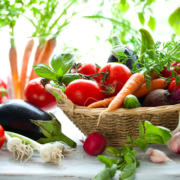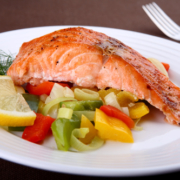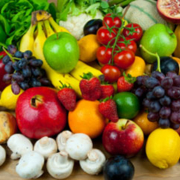What Chiropractic Patients Need To Know About Acidity vs. Alkalinity In The Body
There has been a lot in the media lately about alkalinity and acidity in the body, but finding solid, straightforward information isn’t always easy. In short, acidity can cause a number of health issues. There are many benefits of bringing your body into balance.
What is high acidity?
The term acidity describes a condition where the body is affected by the excess production of gastric acids. Under normal conditions, hydrochloric acid is secreted by the stomach, aiding in the digestion and breakdown of food.
However, when this normal process is triggered in such a way that it causes overproduction of the acid, it can result in health problems. Acidity can be caused by irregular eating patterns, fad diets, alcohol consumption, stress, smoking, an unhealthy diet, and a sedentary lifestyle. Symptoms can include:
- Indigestion
- Burning in the stomach
- Belching
- Sour taste
- Burning in the throat
- Constipation
- Nausea
- Restlessness
What are the dangers of high acidity in the body?
When the body is acidic, it can affect everything from immunity to neurological function to bone health. The Japanese have linked acidity to degenerative diseases like arthritis, cancer, and osteoporosis.
An acidic body is also a very hospitable environment for bacteria and viruses to thrive meaning the person will often get sick more often. When the body is out of balance it becomes susceptible to conditions as simple as dandruff and as complex as diabetes. Interestingly, many people have reversed or gone into remission by simply bringing their body into balance.
What is alkalinity?
In order to understand alkalinity, you need to understand pH levels. This is the measure used to determine how alkaline or acid something is. A pH of 0 is at the acidic end of the scale and means the thing being measured is completely acidic. At the other end of the scale, a pH of 14 is totally alkaline. The neutral point is a pH of 7.
Different parts of the body have different pH levels, meaning that some parts are more acidic while others are more alkaline. For instance, blood typically has a pH that is between 7.35 and 7.45, making it slightly alkaline. The stomach, on the other hand, is highly acidic, registering a pH of 3.5 or lower. Making the body more alkaline is not about making it completely alkaline – you need some acidity, it is necessary for digestion and other processes – it is more about bringing the body into balance.
What are the benefits of alkalinity?
When the body has increased alkalinity, bringing it into better pH balance, it is healthier and has a decreased risk of chronic illness. There is also less likelihood of illness. When the body is in a better pH balance it can result in many benefits including:
- More energy
- Improved cognitive function
- Slowed aging process
- Weight loss
- Lower cancer risk
- Decreased risk of chronic illness
- Increased immunity
How can you bring your body into balance?
The best way to bring your body into better pH balance is by modifying your diet. As a rule of thumb, animal based foods like meat, eggs, and dairy tend to be more acidic. A vegetarian diet rich in plant-based foods like vegetables and fruits tend to be more alkaline. While the body does need a diet that includes both acidic and alkaline foods, a diet of processed foods and foods high in fat and sugar can cause too much acidity. By adjusting the diet, eliminating processed foods, and maintaining a healthier, more vegetarian based diet, you can bring your body into balance and enjoy better health as a result.
Visit www.ocwc.ca for more tips on how to get your body feeling and looking better!









